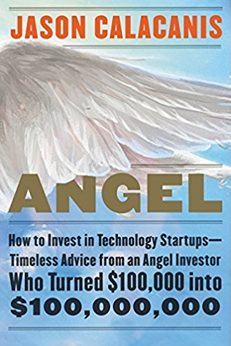Usefulness
Content
Freshness
Every investor would love to pick winners and only winners. While that’s impossible, “Angel” provides seasoned guidance for accredited investors who want to get better at it. It’s also written for startups seeking funding from angel investors, whether savvy to the pitching game or not. The book is decidedly focused on tech startups, but thankfully there’s no geekspeak in it.

Angel investing is high-risk by nature, but investors don’t need to be reckless. They can be purposeful, or, if steered by the advice in Angel: How to Invest in Technology Startups, methodical. If you’re a startup, there’s a right way to communicate with angel investors, and numerous ways to get rejected. At 272 pages (32 chapters) Angel gives plenty of tips on what a founder can first say to be taken seriously, and then to maximize relationships with angels. But the book’s focus is the angel investing side.
What is Angel About?
The first 25 chapters contain the right amount of the author’s personal journey, but mostly informs accredited investors on how they can get started in evaluating tech startups — hopefully ones with unicorn potential at the right stage. Angel also includes sections on blind spots that only a seasoned investor can point out, traits to look for in a high-potential founder, due diligence, investor updates, the downside of being an investor, and 127 other topics. Ways to spot impropriety, whether from founders or other investors, are mentioned throughout the book.
In chapter 26, it’s finally revealed that the book is also powerful for entrepreneurs looking to develop great relations with potential investors. In most instances, a founder can read the advice and simply flip the frame of reference.
Author Jason Calacanis has well over 100 angel investments to his name including Uber, Nimble CRM, Rapportive, and Tumblr. Rising from a C-minus student in Brooklyn to one of the most sought-after startup advisors in America, his 150 million dollar portfolio reflects wins, losses and missed opportunities. Living on the edge of technology and the future, Calacanis believes world problems won’t be solved by governments, but by entrepreneurs.
What Was Best About Angel?
On the investor side, there’s priceless knowledge such as how to protect yourself with “pro rata” rights; and pillar terms (e.g.: seed rounds, series A, bridge rounds, mezzanine rounds, deal memos, broke angels, cap tables, etc.) are discussed early on.
While it’s necessary to consider the risk factors inherent in an individual startup, the book emphasizes that new investors must analyze risk in relation to net worth. What can you realistically afford to lose? Angel contains some templates and hypothetical conversations. The raw writing style in the latter (and throughout the book) is straightforward. In the people stories, sometimes names are mentioned. Other times they’re left out. If you’re looking for Silicon Valley stories retold with colorful (but not vicious) accents, this book will satisfy. Calacanis isn’t shy about admitting he was banned from Y Combinator’s Demo Day, or that his communication style can be, in his own words, abrasive and combative. The writing can be snarky-with-a-purpose, or snarky-in-good-fun, like when it says startups who don’t seek angel or VC money have a name — they’re called small businesses. Prudes, take note: That’s a very safe example of the humor in “Angel”.
What Could Have Been Done Differently?
A player of high stakes poker, Calacanis uses gambling phrases like “pocket rockets”, “ace of spades”, “floor”, and even calls investments “bets” with some frequency. This will be a plus for readers who feel at home in Vegas casinos, but it’s possibly ineffective or mysterious for people who aren’t into that scene. For me, I’m glad it wasn’t excessive. Calacanis believes it’s important to physically move to Silicon Valley to be in the thick of things, and if you want to reach the highest levels of angel success, it’s the only real way. While he’s the professional and likely right, several tips in Angel are tied to this one opinion. Just something to keep in mind.
Why Read Angel?
If you’re an accredited investor new to the world of angel investing, meeting startups through incubators, single-deal venture capital funds (angel syndicates) and the rest of this exciting world, Calacanis’s book is officially marketed to you. However, it also serves double duty, obvious from the way chapter 26 opens:
“If you’re a savvy founder who bought this book to understand how angel investors think, I salute you clever, sneaky little bastards. You’re one step ahead of the class, and you’ve stolen the next test from the teacher’s office …”
Angel is also available as an audio book through Audible, fully narrated by Calacanis. Annointed by Sequoia Capital into their scouting program as a young man, Calacanis was tasked with finding the next big thing. Now in his mid-forties, his investor DNA still craves the thrill of the hunt, but layered on top is the razor-sharp experience Calacanis has accumulated over the years as one of Silicon Valley’s legendary insiders.
